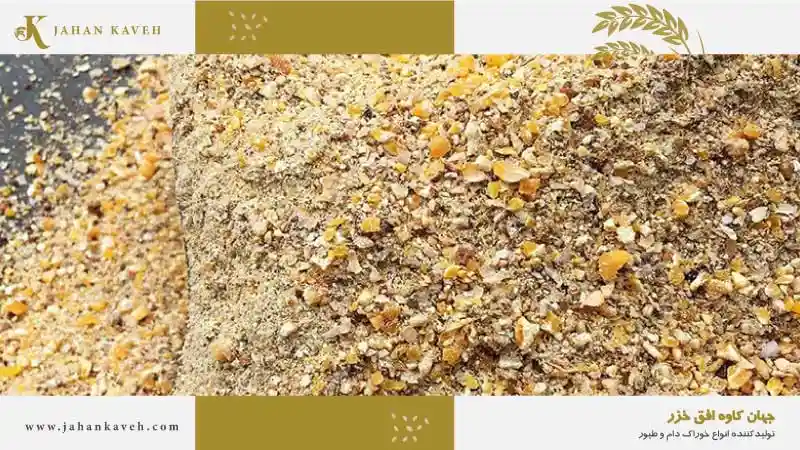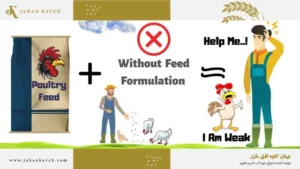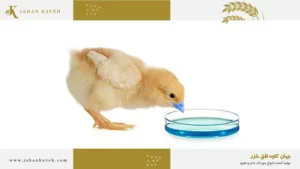What is Poultry Concentrate?
Concentrates are feed mixtures high in protein, minerals, and vitamins that are combined with grains or other substances to provide a balanced diet. According to the Association of American Feed Control Officials (AAFCO, 2000), “A concentrate feed is a feed that is used with a basal ration to improve the total dietary balance. It is also intended to be further diluted and mixed to produce a supplement or a complete feed.”
A better definition of concentrate is: an incomplete feed that contains a high percentage of energy, protein, premix (vitamins, minerals, amino acids, enzymes, organic acids), and other additives depending on the concentration added to the feed. This means that concentrate feed is mixed with foods such as corn, soybeans, groundnut meal, bran, etc.
In fact, concentrate is a concentrated dietary supplement formulated to meet the specific nutritional needs of poultry. Therefore, indiscriminate use and lack of sufficient information about the composition of this product can have serious consequences for the health and performance of the flock.
Why is it important to know the composition of concentrate?
Since concentrate is not a complete diet, it’s crucial for poultry farmers to be aware of its composition. The improper use of concentrate and its combination with other bird feed can lead to deficiencies or excesses of certain nutrients, resulting in health problems and reduced flock performance.
Additionally, understanding the composition of concentrate is essential for ensuring optimal health and productivity in your flock. Improper use of concentrate can lead to nutrient imbalances, which can result in various health issues and reduced performance. By knowing the exact ingredients and proportions, you can create a tailored feeding plan that meets the specific needs of your birds.
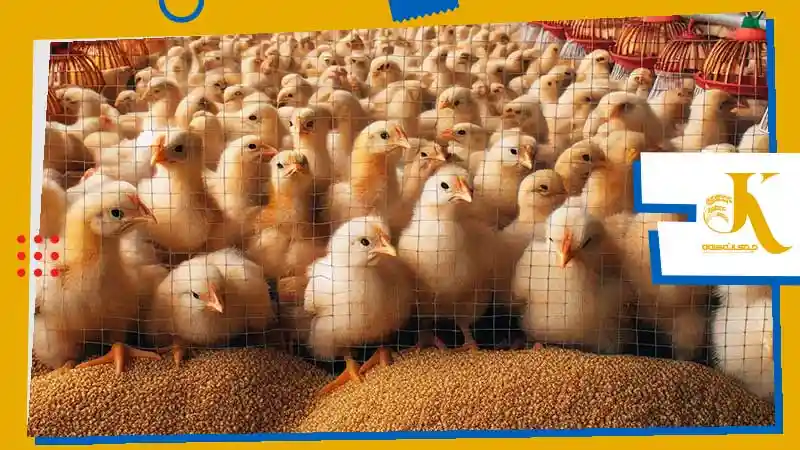
What should I know about chicken concentrate?
Using chicken concentrate can be very beneficial in poultry nutrition, but only if done carefully and with full knowledge. Before using any type of concentrate, it is best to obtain complete information about the concentrate so that you can select the most suitable concentrate for your flock, considering the breed, age, environmental conditions, and breeding goal.Making informed decisions about chicken concentrate can significantly impact your flock’s health and productivity. Here’s what to look for:
- Ingredients: Understanding the basic ingredients (vitamins, minerals, etc.) ensures the concentrate meets your chickens’ needs.
- Nutrient levels: Knowing the amounts of protein, energy, and other nutrients helps you balance your chickens’ diet.
- Additives: Be aware of any added substances that might affect your chickens.
- Expiration date: Always check the expiration date to ensure the concentrate is fresh.
Types of Chicken Concentrates Available on the Market
Chicken concentrate feed focuses intensively on one or more specific nutrient groups. This targeted approach makes concentrates powerful tools for meeting the specific nutritional needs of poultry. Here’s a breakdown of key focuses:
- Energy: Energy is the fuel required for all vital activities of the bird’s body. From growth and development to egg production and maintaining body temperature, everything requires energy.
- Protein concentration: Proteins are essential for cell growth, antibody production, and building body tissues. Why focus on protein? High-protein concentrates are very important for day-old chicks and broilers during the growth period.
- Minerals, vitamins, and additives: Minerals such as calcium, phosphorus, sodium, and potassium are essential for the proper functioning of many body systems. Also, eggshells, dicalcium phosphate, table salt, and more are among the sources of minerals in concentrates.
The focus of the concentrate on specific nutrients allows producers to produce products that meet the precise nutritional needs of each group of poultry. By choosing the right concentrate, farmers can achieve maximum production efficiency and ensure the health of their flock. At the same time, the goal of poultry farming is also important, such as broilers, layers, which vary the type of concentrate.
Concentrates are also available in the market with different percentages of nutrients, such as 2.5% and 5%. For example, if it is said that the chicken concentrate is 2.5%, it means that the poultry farmer will reach the appropriate formula for the broiler feed by adding 2.5% of the concentrate to grains, corn, and soybeans. In fact, this means that the farmer mixes 25 kilograms of concentrate in one ton of feed to meet all the needs of broilers.
Chicken concentrate is also classified according to the age and stage of poultry rearing (starter, grower, or finisher). The nutritional needs of poultry vary for different ages of growth.
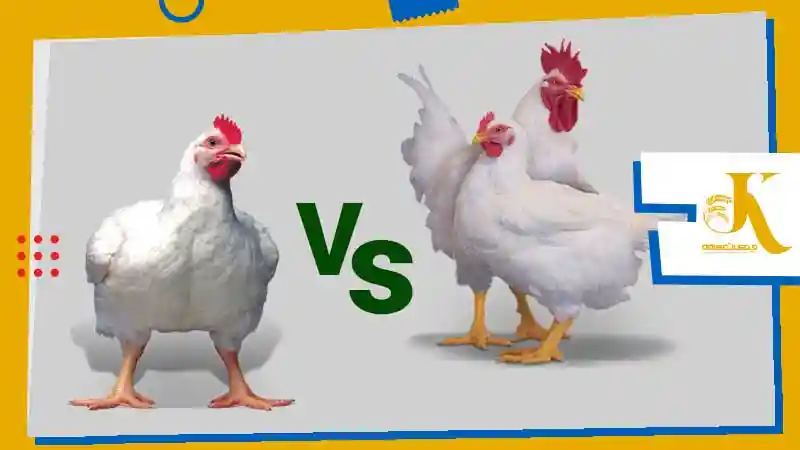
What is the difference between broiler and layer chicken concentrates?
Broiler and layer chicken concentrates are both used to feed chickens, but their formulations and compositions differ due to the nutritional needs of these two types of chickens. These differences stem from the distinct goals of raising these two types of chickens:
- Primary Feeding Goal:
o Broiler Concentrate: The primary goal of feeding broilers is to increase weight and promote rapid growth so they reach slaughter weight in the shortest possible time. Therefore, broiler concentrates are typically high in protein, fat, and energy to meet the demands of rapidly growing muscles.
o Layer Concentrate: The goal of feeding layers is to increase the production of high-quality eggs. Therefore, layer concentrates contain minerals such as calcium and phosphorus for eggshell formation and vitamins necessary for egg production. - Nutrient Composition:
o Protein: Broiler concentrates have a higher protein content to support rapid muscle growth, while layer concentrates do not require as much protein.
o Calcium and Phosphorus: Layer concentrates contain higher levels of calcium and phosphorus to be used for eggshell formation.
o Vitamins: Both types of concentrates contain vitamins, but the types and amounts of vitamins differ.
o Energy: Broiler concentrates have more energy to meet the high energy demands of growing chickens. - Feeding Stages:
o Broilers: These concentrates are used for short-term periods and are aimed at rapid growth. Feeding typically changes periodically with different concentrates (starter, grower, finisher) to achieve maximum weight.
o Layers: Feeding here is long-term and aimed at maintaining egg production and chicken health. Layer concentrates are consumed from the time the chicken reaches egg-laying age and are generally not as sensitive to weight changes. - Fiber and Carbohydrates:
o Broilers: They have more carbohydrates and less fiber to provide more energy for rapid growth.
o Layers: They have more fiber to improve digestive function and result in better egg production.
- Primary Feeding Goal:
Why are the differences between broiler and layer concentrates important?
As mentioned earlier, broilers and layers are two different types of poultry with distinct breeding objectives and metabolic needs, as discussed in the previous section. Using an inappropriate concentrate can lead to deficiencies or excesses in the bird, which, in turn, can affect the bird’s health and performance.
The use of an inappropriate concentrate can significantly increase production costs. For example, using a concentrate with an inappropriate formulation for broilers can lead to reduced growth, increased feed consumption, and ultimately reduced profitability. This is because improper nutrition can cause various diseases in the flock. For instance, a calcium deficiency in laying hens can lead to osteoporosis and reduced egg production.
Another important factor is the quality of the final product, which is directly influenced by nutrition. Using the right concentrate results in higher quality meat, eggs with strong shells and deep yellow yolks, which have greater market value.
In short, using the appropriate concentrate for each type of chicken is an investment that benefits the poultry farmer. This investment leads to increased production, improved product quality, reduced costs, and ultimately increased profitability. To better illustrate this point, let’s use a simple example:
Imagine we want to prepare food for a bodybuilder and a marathon runner. Both of these individuals need protein, but their needs for carbohydrates and fats differ. If we give the bodybuilder a marathon runner’s diet, their muscle building will be compromised, and if we give the marathon runner a bodybuilder’s diet, they will not have enough energy to run a marathon.
The same is true for chickens. Each type of chicken requires a specific diet to perform at its best.
Poultry Concentrate Production Process
The production of poultry concentrate is a complex yet precise process that requires adherence to specific standards. Generally, the steps involved in poultry concentrate production can be summarized as follows:
Diet Formulation:
o Determining nutritional requirements: Based on the age, breed, production purpose, and environmental conditions of the poultry, the exact nutritional needs are determined.
o Selecting raw materials: Suitable raw materials such as corn, soybeans, oilseed meals, fats, vitamins, and minerals are selected based on the formulation.
o Determining ingredient ratios: The exact ratio of each raw material in the formulation is determined.Raw Material Preparation:
o Cleaning and Grinding: The raw materials are cleaned and ground to the desired particle size.
o Mixing Dry Ingredients: The ground dry ingredients are mixed homogeneously.Adding Additives:
o Vitamins and Minerals: Premixes of vitamins and minerals are added to the mixture.
o Enzymes and Probiotics: If necessary, poultry enzymes and probiotics are added to improve digestion and nutrient absorption.
o Other Additives: Depending on the need, other additives such as pigments and flavorings may also be added.Packaging: The concentrate is packaged and made ready for shipping.
Quality Control: A series of tests are carried out throughout the entire production process, including after packaging, to verify that the product meets.
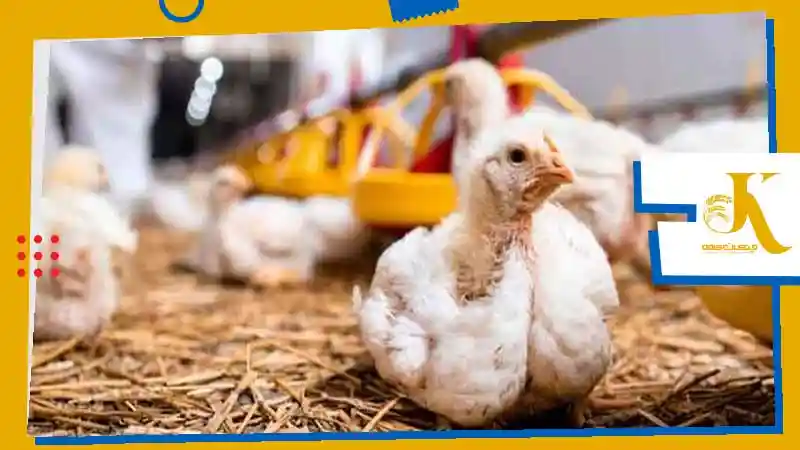
What are the ingredients of broiler chicken concentrate?
Broiler chicken concentrate is formulated under the supervision of a poultry nutritionist and is composed of essential micronutrients. These ingredients include dicalcium phosphate or monocalcium phosphate for phosphorus and calcium, calcium carbonate, special vitamin and mineral supplements for broilers, essential amino acids such as methionine, lysine, and threonine, choline chloride, phytase enzyme, multi-enzyme, salt, baking soda, and other additives.
Advantages and Disadvantages of Buying Chicken Concentrate:
- Advantages Poultry Concentrate:
o Low cost: The price of chicken concentrate is generally lower.
o Time saving: There is less need for manual measurement and mixing of ingredients.
o Reduced labor costs: Less labor is required to prepare the feed. - Disadvantages Poultry Concentrate:
o Potential for errors when mixing: There is a possibility of errors in the proportions when mixing the concentrate with other ingredients manually.
o Inconsistent feed: Manual mixing can lead to inconsistent feed, resulting in uneven growth in the flock. This can have significant consequences for the poultry farmer, such as poor performance.
o High wastage of concentrate in mesh form: The mesh form of concentrate can lead to significant wastage. Additionally, the varying particle sizes can reduce flock uniformity. For this reason, Aviagen, a producer of Ross chickens, emphasizes the use of pelleted feed in their catalog for greater efficiency.
Article: What is a pellet and how is it made?
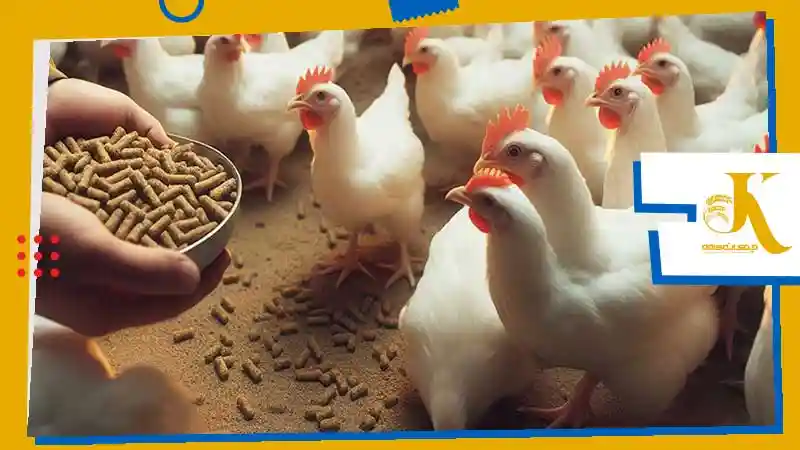
Concentrate vs. Complete Feed: Which is Better?
The primary types of poultry feed can be categorized into two main types:
• Concentrate feed
• Complete feed or mash
Poultry concentrate primarily consists of micronutrients including amino acids, vitamins, minerals, phosphorus, calcium, and more. These micronutrients are crucial for both broilers and layers. But which is better for poultry: concentrate or complete feed?
Any errors in feeding chicks and broilers can not only slow down growth and cause diseases in chicks but can also lead to high mortality rates in the flock. Additionally, selecting the right concentrate, based on the type of feed consumed and the dosage, is very important.
Complete feed is preferred over concentrate for poultry for various reasons. Some of the advantages of poultry complete feed over concentrate include:
- Ease of use and reduced errors:
• Ready-to-use: Mashes are produced ready-to-use with a complete formulation and do not require manual mixing or the addition of various ingredients.
• Reduced human error: The probability of errors in mixing ingredients and accurately calculating proportions is significantly lower when using mash compared to concentrate.
• Time saving: Using mash reduces the time and labor required for feed preparation. - Uniform nutrition with pelleted feed:
• Even distribution of nutrients: Nutrients are evenly distributed throughout the feed particles, ensuring that all animals receive the same nutrients.
• Reduced nutrient loss: Due to the uniformity of the feed, nutrient loss is minimized, preventing the wastage of feed. - Improved production performance:
• Increased feed conversion ratio: High-quality mashes typically have better feed conversion ratios, meaning more meat or eggs can be produced with less feed consumption.
• Improved product quality: Using mashes formulated to meet the specific needs of each species can lead to improved quality of the produced products. - Better animal health:
• Reduced digestive problems: High-quality mashes usually contain enzymes and additives that improve digestion and nutrient absorption, preventing digestive problems.
• Strengthened immune system: Some mashes contain immune-boosting substances that help increase the animals’ resistance to diseases. - Ease of management:
• Better cost control: Using mash makes it easier to control feed costs and calculate feed consumption.
• Reduced waste: Mashes are usually supplied in packages, preventing contamination and spoilage, and reducing waste. - More precise formulation: Poultry mash is formulated for different ages of chicks to provide the appropriate nutrients for each age. These products are available in different names for a complete growing period in various factories. Generally, there are three growth phases: starter, grower, and finisher for broilers. For example, one of the best poultry feeds available on the market is produced by Jahan Kavah, and their products for a complete growing period are as follows: Super Starter, Starter, Grower 1, Grower 2, and Finisher. The formulation of these feeds is designed by experts to achieve the best feed conversion ratio, reducing costs and increasing profitability for poultry farmers.
Article: Poultry farming and frequently asked questions of poultry farmers
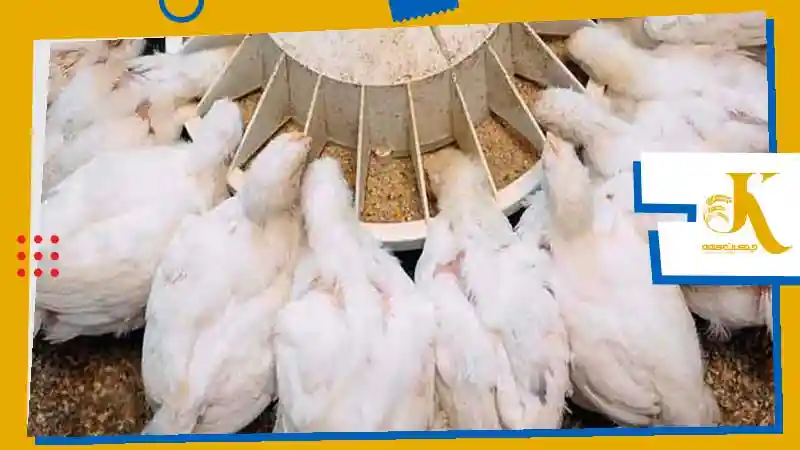
Conclusion
Achieving optimal conditions for broiler chickens in a hatchery is paramount. In just a few weeks, these birds must reach their peak performance to ensure the lowest feed conversion rate and mortality rate for the poultry farmer. As explored in this article, using complete feed for broilers is more cost-effective and beneficial than concentrates.
At Jahan Kaveh, we understand the unique nutritional needs of broiler chickens. That’s why we use only high-quality ingredients such as Brazilian corn and Argentinian soybean in our broiler feed production. A complete diet containing all essential vitamins, minerals, and amino acids is provided. We have also included a suggested feed consumption plan for your reference. The use of premium ingredients results in delicious and pure meat, with minimal carcass loss. This maximizes profitability for both the poultry farmer and the slaughterhouse.
Refrence:

